Вестник ВолГУ. Серия: История. Регионоведение. Международные отношения @hfrir-jvolsu
Статьи журнала - Вестник ВолГУ. Серия: История. Регионоведение. Международные отношения
Все статьи: 1850
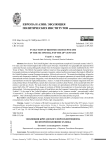
Evolution of British euroscepticism in the second half of the 20th century
Статья научная
Introduction. The United Kingdom is the most prominent example ofa Eurosceptic countryin the EU. For many years the United Kingdom did not feel a part of Europe. Great Britain was geographically separated from continental Europe and psychologically distant from the European integration movement established by the 1957 Treaty of Rome. The British Eurosceptic tradition rested on these geographic and psychological characteristics. Eurosceptic traditions included political, economic, linguistic, cultural and historical aspects that made it difficult for the United Kingdom to accept European integration. Methods and materials. The research methodology is based on narrative and comparative methods. The materials of the study incorporate statements of certain British politicians about attitudes towards European integration, works devoted to the analysis of Euroscepticism in the United Kingdom and manifestos of some far-right political parties. Analysis. Astudy of the attitude to European integration of the two main political forces of Great Britain, namely the Conservative and the Labour Parties, in the second half of the 20th century is carried out. Results. The study results in the creation of a periodization of British Euroscepticism in the second half of the 20th century. Three stages of evolution of British Euroscepticism in the period under study are distinguished: 1) the stage preceding the entryof Great Britain into the European Communities, conventionallycalled “Labour”; 2) the stage of the United Kingdom’s participation in the “common market”, conventionally called “Conservative”; 3) the stage of Britain’s participation in the European Union, conventionally called “Right-wing populist”. Their chronological framework is established and their main characteristics are given.
Бесплатно
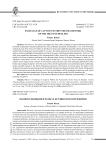
Exchange of captives within the framework of the truce of deulino
Статья научная
Введение. В статье исследован вопрос обмена военнопленными между Россией и Речью Посполитой после заключения Деулинского перемирия 1 (11) декабря 1618 года. Это перемирие ознаменовало окончание Смутного времени в Московском государстве и установило мирные отношения между Россией и Речью Посполитой на 14 лет. Автор провел анализ обстоятельств обмена пленными, а также выделил основные проблемы, которые возникли в ходе реализации договоренностей. Материалы. В качестве источников в исследовании использованы неопубликованные документы Посольского приказа: статейные списки, челобитные, списки договорных записей, хранящиеся в виде столбцов и книг в Российском государственном архиве древних актов в фондах № 79 «Сношения с Польшей» и № 141 «Приказные дела старых лет». Результаты. Деулинское перемирие предусматривало решение двух текущих вопросов: передачу семи приграничных городов и их уездов с последующей делимитацией границы и обмен военнопленными. Со временем была достигнута только часть первых договоренностей. По общему признанию, замки плавно перешли в польско-литовское владение, но из-за взаимных притязаний граница на Трубчевско-Новгородско-Северско-Брянской линии и Витебско-Торопецкой стала частью Поляновского мира (1634 г.), положившего конец Смоленской войне. Проблемы были также с обменом пленными, который произошел с опозданием более чем на три месяца. Здесь, однако, единственным виновником была польско-литовская сторона.
Бесплатно
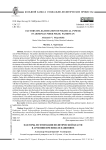
Factors of Legitimation of Political Power in Armenia Under Nikol Pashinyan
Статья научная
Introduction. The article analyzes the features of the functioning of political power in Armenia during the rule of Nikol Pashinyan. The authors determine the factors of legitimation of the political regime in modern Armenia. Methods and materials. Using the method of biographical analysis, the authors construct a political portrait of the Armenian prime minister. With the help of factor analysis, the most important factors of legitimation of political power in modern Armenia are highlighted. The sociological method is also used, recording the mood of Armenian society in certain situations arising in Armenian political life. Analysis. Nikol Pashinyan has the image of a politician who defends the interests of Armenia both within the state and in the external contour. This is predetermined by his political experience and the balance of power in the Armenian political elite. The factors of legitimation of the political regime depend on the current economic situation. The role of the Armenian political culture is also high. It is characterized by short expectations and a high emotional component. There are also special expectations of the society from a specific politician who is trusted to overcome the current political and economic crises. Results. The Armenian leader is constantly puzzled by questions of his legitimation. N. Pashinyan still has enough political experience to maintain political stability in the republic. Today, this is difficult to achieve, given the grave consequences of the defeat in the Karabakh conflict. One can see how his rhetoric changes in the case of the Collective Security Treaty Organization (CSTO). Relations with Russia are subject to high dynamics. The Armenian leader is trying to position himself as an ally of the West, improving relations with the USA and France. China is gradually taking on the role of an important geopolitical partner. Relations with Turkey are normalizing. The political maneuvering of the Armenian prime minister may confuse geopolitical partners. However, such behavior largely meets the interests of the state and N. Pashinyan’s voters. The authors believe that the current political situation plays into the hands of the Armenian leader, who managed to convince society of his indispensability. Authors’ contributions. A. Skiperskikh examines the political process in Armenia from the perspective of challenges for the political regime. M. Yepremyan studies the connection between Nikol Pashinyan’s legitimation and internal and external factors. The authors consistently come to the conclusion that the Armenian prime minister is extracting the maximum for himself from the current political situation. The external and internal audiences receive a political signal from N. Pashinyan that Armenia is getting out of difficult geopolitical puzzles with benefit.
Бесплатно
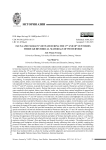
Статья научная
Introduction. The article systematically studies animals and plants in Vietnam, which were mentioned in historical materials by Westerners who have been present in Vietnam or were interested in researching this country during the 17th and 18th centuries. Based on the analysis of the advantages and limitations of historical materials records by Westerners during this period, the authors of the article aim to initially restore a piece of natural conditions in particular, as well as the overall picture of the country and people of Vietnam in general during the 17th and 18th centuries. Methods and materials. The authors combine the two main research methods: comparison and collating. To complete the research of the content in the article, the authors used original historical materials, including reports, letters, travel diaries, works, etc., of Western missionaries, traders, travelers, and researchers who operated in Vietnam or were interested in researching this country during the 17th and 18th centuries. Analysis. In the 17th and 18th centuries, to preach the Gospel, trade, travel, and research, Westerners set foot in Vietnam or were interested in studying this country. During that process, many aspects of the country and people of Vietnam were recorded in their reports, letters, travel diaries, works, etc. Among them, natural conditions in general and Vietnam’s animals and plants in particular are also the content that attracts the attention of Westerners. That is an essential premise for the article’s author to conduct research and provide a statistical table of animals and plants in Vietnam during the 17th and 18th centuries. On that basis, the author analyzes and highlights the accurate and detailed description while clarifying some non-incompatibilities and shortcomings when comparing and collating historical materials recorded by Westerners about several specific animals or plants. All of the above work is aimed at evaluating as objectively and accurately as possible the value of historical materials recorded by Europeans in conveying the image of the country and people of Vietnam who came to the Western world during the 17th and 18th centuries. Results. The article has provided researchers and readers with an overview of the animal and plant species mentioned in historical documents recorded by Westerners during the 17th and 18th centuries through the creation of statistical tables and analysis of data from those statistical tables. Based on the analysis of the advantages and limitations of these historical documents, the article’s authors initially affirm their significance in partially restoring the appearance of the system of animals and plants in Vietnam during this period. Authors’ contribution. Truong Anh Thuan searched and collected historical materials recorded by Westerners during the 17th and 18th centuries related to Vietnam’s flora and fauna and formed the article’s main contents. The author analyzes the advantages and limitations of these historical materials, thereby affirming their value in initially restoring the picture of Vietnam’s flora and fauna in the 17th and 18th centuries from the perspective of history and bibliology research. Vo Van Minh conducted statistics and classification and created statistical tables on Vietnam’s flora and fauna mentioned in historical materials recorded by Westerners during the 17th and 18th centuries. He analyzed data from those statistical tables as a basis for making scientific judgments and assessments presented in the article.
Бесплатно
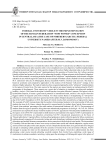
Статья научная
Introduction. Currently the notion of the “soft power” is perceived as an effective way of nation’s non-forcible influence on other countries with a view to implement one’s own objectives. Suchlike implementation is confined to particular spheres to form a positive image of the nation. Higher education today is one of the most efficient instruments of the “soft power” implementation in the countries of Central Asia, for it allows securing friendly political and economic elite as well as enhancing the quality of labour migrants to the Russian Federation. The aim of the research is to analyze particular features of the “soft power” implementation in the domain of higher education in case with the region of Central Asia on the example of Northern (Arctic) Federal University named after M.V. Lomonosov (the city of Arkhangelsk, Russia, henceforth NArFU). Methods and materials. The study is based on systematic and comparative approaches to the analysis of the Russian “soft power” strategy in the domain of higher education. The studyin hand also draws on general approaches to the “soft power” implementation in the region of Central Asia. The main sources for the analysis are annual reports on implementing the NArFU programme of development. These reports pay a great deal of attention to academic recruiting and academic mobility. Analysis. The Central Asia region is crucial from the view point of Russia’s interests. The region is rich in hydrocarbon deposits, it boasts a great transit potential in international trade, and this is the region where the biggest number of migrants come from to Russia. For these reasons Russia is strengthening its “soft power” influence on Central Asian countries in general and in the sphere of higher education in particular. From the very day of the NArFU foundation in 2010, the region of Central Asia has been considered as a high-priority region. The example of NArFU demonstrates that the number of international students in the total number of full-cycle students has risen by 8.4 times, wherein the growth is secured mainly by students from Central Asian countries. Central Asian students’ percentage of the total number of international students is 82-89.3%. The percentage of students from the region in question, doing short-term educational programmes is also high - 49.5-61.4%. Diverse mechanisms are exploited to attract would-be students to NArFU: agreements with educational establishments of the region; visits of NArFU’s representatives (both lecturers and students) to the region; NArFU’s participation in international exhibitions on education; presenting NArFU’s educational programmes on the basis of “Rossotrudnichestvo” regional offices; inviting school graduates to study within the quota for fellow-countrymen residing abroad; arranging off-site university testing and multi-disciplinary intellectual contests; higher educational allowances and medical insurance compensation; active promotion with the help of social media. The international Friendship Club and the team of tutors were set up to ensure better social and cultural adaptation, regular events and excursions take place on the same purpose. Results. Despite the fact that there is no general state-level integral concept on attracting school graduates from the countries of Central Asia to the universities of Russia, NArFU managed to occupy the niche on the educational market of the region. University’s administration has been pursuing a clear course towards attracting would-be students from Central Asia, exploiting a wide range of mechanisms to enhance academic recruiting, relying upon the advantages of Arkhangelsk region in the sphere ofmigrants’ adaptation. Over the recent ten years the factors mentioned above have brought about more than eight times growth of students from the region of Central Asia in NArFU.
Бесплатно
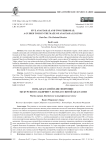
Статья научная
The recent data related to the legend of St Anastasia in Byzantium require a fresh analysis of the mutually connected cults of Anastasia and Febronia in both the Christian East and West. Part One of the present study is focused on the East, whereas Part Two will be focused on the Latin West. In Part One, the cult of Anastasia is discussed especially in Constantinople from the mid-fifth to the fourteenth centuries, with special attention to the epoch when the Imperial Church was Monothelite (seventh century). In this epoch, a new avatar of St Anastasia was created, the Roman Virgin, whose Passio was written on the basis of Syriac hagiographic documents. The cult of this second Anastasia was backed by Monothelite Syrians, whereas the fifth-century cult of Anastasia in Constantinople was backed by the Goths. Transformations of Anastasia cults in the era of state Monothelitism were interwoven with a new Syriac cult of Febronia of Nisibis that appeared in the capital shortly after its creation in Syria in a Severian “Monophysite” milieu.
Бесплатно

Статья научная
In this concluding part of the study of the western hagiographical dossier of St Anastasia, the attention is focused on two main problems: the earliest cult of St Anastasia in Sirmium (replacing the cult of St Bassilla with the cult of St Anastasia) and the cult of Anastasia and Petronilla in the St Andrew church created by Pope Symmachus near St Peter’s cathedral. The development of the cult of St Petronilla (the legendary daughter of Apostle Peter) is related to a specific commemoration of St Peter established by Pope Leo the Great.
Бесплатно

Статья научная
The present article is a part of the study of the hagiographical dossier of St Anastasia, where the authors focus on three major problems: 1) the earliest Roman legends containing the name of Anastasia and other names occurring in her dossier; 2) the cult of the historical martyr in Sirmium that was lately transformed into the cult of St Anastasia; and 3) the place of the Anastasia church in the pre-Byzantine stational liturgy in Rome. The latter point involves a study of the original place, in the fifth-century stational liturgy of Rome, of the basilica Santa Maria Maggiore.
Бесплатно

Статья научная
Sections from 1 to 4 of Part Two of our study, which is dedicated to the western legends of Anastasia, are focused on an investigation of the Aquileian legend and, then, going in the reverse chronological order, on the early Roman legend before its reception in Aquileia. The plot line dedicated to Chrysogonus is an Aquileian addition lacking from the earlier Roman legend. The pious mother of Anastasia called Fausta belongs to the same plot line, whereas the mother of the “original” Anastasia was pagan.
Бесплатно
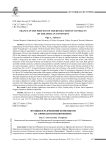
France in the process of the resolution of conflicts on the african continent
Статья научная
Introduction. Historically, France has always had an impact on the African continent. Despite the independence of most French colonies in Africa, France managed to maintain its position in the region. The system called “Françafrique” was created. The first element of this system is economic cooperation, namely the fact, that Africa provides an opportunity to use its natural resources. Another important element is the military one. The White paper of France has repeatedly emphasized the strategic importance of Africa for the Fifth Republic. In the 2010s, the situation in the region deteriorated. France’s assistance in overcoming internal crises in Mali, Chad, Libya can be considered an evidence of the increasing role of France in conflict resolution, and that is the thing which is analyzed by the author in this work. Methods and materials. While writing the article, both official documents of the French government and analytical works of famous French authors were used. Both general scientific methods (analysis, synthesis) and quantitative scientific methods (event analysis and content analysis) are used in the paper. Analysis. The article is devoted to the activities of France on the African continent in the period from 2011 to 2017. A Special attention is paid to the role of France in the conflict resolution of Africa. In particular, the paper considers France’s support for the adoption of the UN resolution in response to the civil war in Libya in 2011 and military intervention in the country; militaryoperations of the Fifth Republic in the Sahel zone - Serval operation and in the Central African Republic - Sangaris operation, military presence of France in Djibouti. The paper emphasizes the keyprovisions of the French policy towards the African continent aimed at the preservation of French influence in the region. Results. In the article, the author comes to the following conclusions: France is not ready to abandon its military ambitions, it continues Barkhane operation, without stopping the fight against terrorism in the Sahel region; despite the competition from other countries (in particular, China and Japan), France’s military presence in Eastern Africa remains the same, France does not intend to leave the base in Djibouti.
Бесплатно
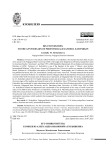
His Universities: To the Anniversary of Professor Alexander I. Kubyshkin
Статья научная
Introduction. The article is about Professor A.I. Kubyshkin, who had devoted more than 25 years of his career to the Volgograd State University (VolSU). He taught at the Department of History, headed the Center for American Studies “Americana”, and from 1995 to 2008 headed the Department of Area Studies and International Relations at VolSU. Professor A.I. Kubyshkin is one of the founders of the series 4 “History. Area Studies. International Relations” of the Science Journal of Volgograd State University, and he is a member of the Editorial Board. Professor A.I. Kubyshkin is the author of 160 publications, 7 monographs, and 15 collective ones, and he has published in Russia, the USA, Great Britain, Canada, and France. Materials. The main materials for the article are memoir articles by Professor A.I. Kubyshkin and his colleagues about the development of American studies and research of the North American states in Russia and, in particular, at Volgograd State University, and publications by A.I. Kubyshkin about the U.S. higher education system and universities. Analysis. The article briefly describes the main stages of the teaching and research career of A.I. Kubyshkin. Since 1978 and up to the present, Professor Kubyshkin has conducted his main educational and scholar activities at three Russian universities: Ivanovo State University, Volgograd State University, and St. Petersburg State University. At VolSU from 1995 to 2008, A.I. Kubyshkin headed the department and contributed to the development of the study of North American states. From 2008 to 2025, Professor A.I. Kubyshkin, working at St. Petersburg State University, has defined the field of his research interests, in addition to the history of Russian-American relations, as university studies and the particular study of universities in the USA and Canada as resource models of international educational space and modern innovations, which resulted in the monograph “Town and Gown. American University in the Structure of Civil Society”.
Бесплатно
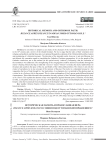
Historical memory and orthodox faith: Byzance apr`es byzance in Sofia under ottoman rule
Статья научная
In our article we propose a case study on the character of the veneration of neomartyrs of Sofia in the 16th century and a review of the related literature. We try to argue that the aims of their veneration were religious and political, and that these aims were attained through the exaltation of the Christian faith and the creation and maintaining of a historical memory. The direction of the intended results, however, is not anti-Ottoman, but anti-Islamic; the veneration urged to consolidate the Orthodox Christian congregation. It is to the people of the Orthodox confession, not to the national (in this period mostly “ethnical”) community, that the veneration of the neomartyrs was addressed. The strengthening of the congregation could be achieved excellently through the martyr’s bearing witness (having in mind that “ martyros ” means “witness” in Greek); the martyr adds holiness to the place and sacralizes the space of the city, and finally of the whole political milieu. The witness is not only the creator of sacredness, he is also a keeper of the memory of the past. The martyr is a champion because he / she vanquishes the foes of God through his / her martyrdom. As a champion, he is a reminder of the glorious past; as a victor, he is a Defensor fidei in the present. This is a clear confirmation of God’s power under different historical circumstances. These ideas directed at the restoration, but only spiritual, of the Christian Empire through the Body of the Church. This explains the absence of any overt opposition against Ottoman power. Therefore, we find here, in Sofia, a conception of Byzance après Byzance of the same type as we find in Constantinople after the fall of the Empire, when the Ecumenical Church adopted part of the Empire’s heritage.
Бесплатно
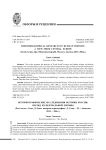
Рецензия
The review presents the analysis of Gyula Szvák’s essays and studies written on Russian historiography over more than thirty years. His main field of research, the reigns of Ivan the Terrible and Peter the Great, and their importance in the course of Russian History stand in the focus of the collected works. His method, called by him “historical microphilology”, is reminiscent of the approaches used by some scholars of conceptual history. He argues that by using this method some paradigms can be revealed which can help us better understand the flow of Russian History.
Бесплатно
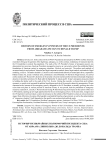
History of emergency powers of the US presidents: from Abraham Lincoln to Donald Trump
Статья научная
Introduction. In the context of the COVID-19 pandemic announced by the WHO in 2020, American researchers bring up the question of the legitimacy, adequacy, or, on the contrary, redundancy of measures taken by the US leadership to protect the population. The study of the US President’s history of emergency powers can demonstrate how previous American Presidents managed to preserve or, conversely, subvert the established liberal foundations of American society in emergency situations. Methods and materials. The author used methods of structural analysis and synthesis, historical and legal comparative method, formal legal method, and method of legal modeling. Analysis. The author studied A. Lincoln’s extra-constitutional authority to emancipate slaves, suspend the Habeas Corpus Act, create a volunteer army, and declare a naval blockade. On the basis of legal sources, we carried out the analysis of F. Roosevelt’s decisions on the creation of courts-martial and the internment of people of Japanese descent; reviewed the activities of G. Bush after the September 11 attacks and D. Trump’s emergency measures related to building the border wall in the south of the USA. Results. During the research, we found, that each military, economic, or social crisis increased the political significance and role of the executive branch in emergencies. We can characterize the increase of the emergency powers, delegated to the US Presidents, as steadily growing due to the crises that took place in various periods of American history. It was proved, that the precedents of emergency measures created by A. Lincoln, F. Roosevelt and George W. Bush had a long-term impact on the actions of the next US Presidents, opening up new legal opportunities for the use of emergency powers. At the same time, Congress and the US Supreme Court have taken a controversial stance on the validity of the President’s actions at various historical stages. Most of the time, the status of the legislative and judicial branches of government, as well as the understanding of “emergency situation” itself depended on the specific case and practical political needs
Бесплатно
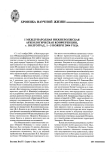
I международная Нижневолжская археологическая конференция, г. Волгоград, 1-5 ноября 2004 года
Статья
Бесплатно
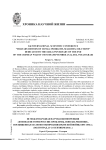
Статья обзорная
В статье представлена информация о проведенной 23-24 сентября 2016 г. в г. Волгограде III Международной научной конференции «Военная история России: проблемы, поиски, решения», посвященной 160-летию окончания Крымской войны 1853-1856 годов. Конференция проведена в Волгоградском государственном университете. Организаторами конференции выступили ФГАОУ ВО «Волгоградский государственный университет», Центр коллективного пользования «Военная история России», Центр по изучению Сталинградской битвы, ФГУБК «Государственный историко-мемориальный музей-заповедник “Сталинградская битва”», ГКУВО «Государственный архив Волгоградской области», Волгоградское региональное отделение Академии военных наук, Волгоградское региональное отделение Российского военно-исторического общества. Конференция была содержательной и представительной по своему составу: свыше 100 представителей научных учреждений РАН, вузов, архивов, музеев и библиотек 20 городов России, Азербайджана, Белоруссии, Украины. Среди участников конференции 22 доктора наук, 40 кандидатов наук. Наряду с уважаемыми профессорами и доцентами в работе конференции приняли участие молодые ученые: ассистенты, аспиранты, магистранты и студенты. В статье проанализирована работа пленарного заседания и 10 секций, центральной из которых была секция «Крымская война: Россия и мир». В постоянных секциях были представлены доклады о военной истории в древности и средневековье, новом и новейшем времени, социальной защите населения в условиях военного времени, военно-политических конфликтах как угрозе безопасности общества и государства, международных аспектах военных конфликтов, военном искусстве в методологии международных «wargame» исследований, подведены итоги работы Центра по изучению Сталинградской битвы.
Бесплатно
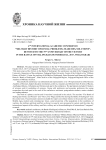
Другой
В статье представлена информация о проведенной 20-21 октября 2017 г. в г. Волгограде IV Международной научной конференции «Военная история России: проблемы, поиски, решения», посвященной 75-летию победы в Сталинградской битве. Конференция проходила в Волгоградском государственном университете. Организаторами конференции выступили ФГАОУ ВО «Волгоградский государственный университет», Центр коллективного пользования «Военная история России», Центр по изучению Сталинградской битвы, ФГУБК «Государственный историко-мемориальный музей-заповедник «Сталинградская битва», ГКУВО «Государственный архив Волгоградской области», Волгоградское региональное отделение Академии военных наук. Конференция была содержательной и представительной по своему составу: свыше 150 представителей научных учреждений РАН, вузов, архивов, музеев и библиотек 28 городов России, Азербайджана, Белоруссии, Узбекистана и Украины. Среди участников конференции 23 доктора наук, 63 кандидата наук. Наряду с профессорами и доцентами в работе конференции приняли участие молодые ученые: ассистенты, аспиранты, магистранты и студенты. В статье проанализирована работа пленарного заседания и 10 секций, центральными из которых были секции «Сталинградская битва: история и современность» и «Нижняя Волга и Дон во время Сталинградской битвы». В постоянных секциях были представлены доклады о военной истории в древности и средневековье, новом и новейшем времени, социальной защите населения в условиях военного времени, военно-политических конфликтах как угрозе безопасности обществу и государству, международных аспектах военных конфликтов, военном искусстве в методологии международных «wargame» исследований.
Бесплатно
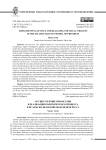
Implementing justice and realizing political process in the Islamic-Iranian model of progress
Статья научная
Introduction. The Islamist model of Iran assumes understanding national values and recognizing rights of indigenous peoples, seeks to meet the material and spiritual needs of society. This model has epistemological, ontological, and anthropological foundations rooted in the revelatory and ideological teachings of Islam. Its content, therefore, is based on monotheism, resurrection, and the inseparability of the worlds. The process of political development in the Islamic-Iranian model is progress based on divine and Islamic knowledge, arising from the heart, historical, indigenous, and cultural conditions of our country, which are realized in the context of the Islamic Republic of Iran. The importance of the research is that, by explaining the indicators of political development, it outlines how the will to achieve it forms in society. Methods and materials. To achieve the desired development and stand up against adversities and sanctions, we must identify our needs, limitations, and political, social, and economic harms and take action to solve them, then keep pace with the new global developments. The strategies considered for data analysis in the present study are in the framework of a qualitative method and based on a descriptive-analytical approach. Analysis. The study raises these questions: what indicators comprise the Islamic-Iranian model of progress’s political development, and how can this model achieve sustainable political development? The results of the study show the indicators of political development in the model are in accordance with the Sharia, and the context of sustainable political development is achieved by committing to implementing justice in the policy-making environment of society.
Бесплатно
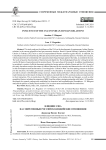
Influence of the USA on Indian-Russian Relations
Статья научная
This study analyses the influence of the USA on the development of contemporary Indian-Russian relations in the current geopolitical and geo-economic situation. Russia’s Special Military Operation (SMO) in Ukraine in February 2022 led to a series of unprecedented Western sanctions against Russia. In addition, the United States aimed to isolate Russia politically and economically from traditional partners. Therefore, this research, which analyses Russia’s relationship with a special and privileged strategic partner like India, is considered relevant. The work is based on the principles of historicism and objectivity. The methodological basis for writing the article was the IR theory of neorealism and the systems theory. The source base of the research, in addition to publications in periodicals, consists of official documents guiding the foreign policies of India, Russia and the USA. As part of the study, the authors analyse the nature of relations between the two countries and determine the role of the USA in their development and transformation. Even though the “Collective West” has been putting pressure on India to join the sanctions, the Indian government continues to be dictated by its national interests, mainly the need to provide its citizens with affordable energy resources. Despite India and Russia’s official statements and growing trade relations due to the import of cheap oil, the authors conclude that the USA continues to play an important role in their interaction. This is mainly due to the USA’s influence on the Indian elite and diaspora, as well as other geopolitical factors, including the expansion of BRICS and the military-strategic partnership with India. I.V. Rogachev developed the research concept and established its theoretical and methodological foundations. J.V. Bhagwat analysed the policies of India, Russia and the USA in various areas and formulated the conclusions.
Бесплатно
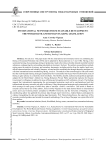
International networks for sustainable development: the world bank and Russian flaring legislation
Статья научная
Introduction. This paper deals with the international environmental norms on combatting the flaring of Associated Petroleum Gas (APG) and its adoption by Russia (decrees no. 7 and 1148). Flaring, or the systematic burning of associated gas during oil production, leads to the release of carbon dioxide and other harmful substances, endangering the surrounding and global environment. Methods. The authors use qualitative methods resting upon the analysis of primary and secondary documents, including articles from the media, legal texts, official communications and scholarly literature, to trace back the conditions that brought about the emergence of a distinct international norms condemning flaring. Analysis. The analysis of the norm through its life cycle reveals that the multi-faceted framing strategies employed by the Transnational Advocacy Network allowed the issue of flaring to gain salience in a relatively short timeframe. The flexible, durable, technical and apolitical approach adopted by the World Bank’s Global Gas Flaring Reduction Private Public partnership explains the Russian Government’s willingness to address the issue of flaring and to legislate on APG utilization. Results. The findings suggest that international campaigning for environmental protection need not be confrontational and that transnational advocacy networks may gain in efficiency if they adopt targeted strategies and systematically recode their message for each group of actors they plan to sensitize. Authors contribution. This article is based on research carried out by one of the authors, Anne Crowley-Vigneau for her dual doctoral thesis on international norms and Local Content policies completed at MGIMO University and the University of Reading. As the coordinating author she gathered the primary data through expert interviews. Andrey Baykov participated in coding, triangulating the data and studying legal documents. Prof. Yelena Kalyuzhnova, the supervisor of this research, provided guidance and created the research methodology. The writing of the paper was a joint effort of all three authors.
Бесплатно

